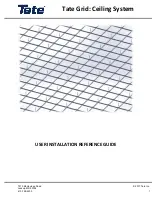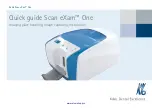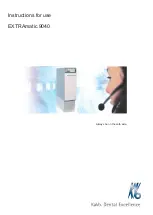
- 5 -
User Manual
Running a Manual Defrost Cycle
Units are pre-programmed to run automatic defrost cycles at preset intervals. However, if you would like to
run a manual defrost cycle at any time, please follow the steps below. Only models with digital controls can
run a manual defrost cycle. Units with mechanical controls cannot run a manual defrost cycle.
Freezers
: Press the defrost button (“def” and down arrow) for approximately 5 seconds. Repeat to stop the
defrost cycle.
Refrigerators
: Press the defrost button (snowflake symbol and down arrow) for approximately 3 seconds.
Repeat to stop the defrost cycle.
Defrost System
Refrigerator coils are kept below the freezing point (32 degrees Fahrenheit). During compressor down-time,
the evaporator fan continues to circulate air through the evaporator coil. This air circulation raises the coil
temperature above the freezing point, melting any accumulated frost.
Run-off water is drained into the evaporator pan and evaporated. Freezer coils are defrosted electrically.
Automatic defrost timers automatically initiate at pre-set intervals and for a pre-determined duration.
Operation/Maintenance
NOTE:
We strongly recommend that any servicing be performed by an authorized service technician.
Loading Product
• Do not block the air duct / fan at the top of the unit. Maintain a minimum of 4” of clearance between
products and the fan at all times.
• Ensure all shelves are sitting level and properly secured before loading products.
• Do not store flammable and explosive gas or liquids inside the unit.
Cleaning the Condensor Coil
• For efficient operation, keep the condenser surface free of dust, dirt, and lint.
• We recommend cleaning the condenser coil at least once per month.
• Clean the condenser with a commercial condenser coil cleaner, available from any kitchen equipment
retailer.
Cleaning the Fan Blades and Motor
• If necessary, clean the fan blades and motor with a soft cloth.
• If it is necessary to wash the fan blades, cover the fan motor to prevent moisture damage.
Cleaning the Interior of Unit
• When cleaning the cabinet interior, use a solvent of warm water and mild soap.
• Do not use steel wool, caustic soap, abrasive cleaners, or bleach that may damage the interior finish.
• Wash door gaskets on a regular basis, preferably weekly. Simply remove the door gasket from the frame of
the door, soak it in warm water and soap for thirty (30) minutes, then dry with soft cloth and replace.
• Check door gaskets for proper seal after they are replaced.
• Periodically remove the shelves and shelf brackets from the unit, and clean them with a mild soap and
warm water.

























